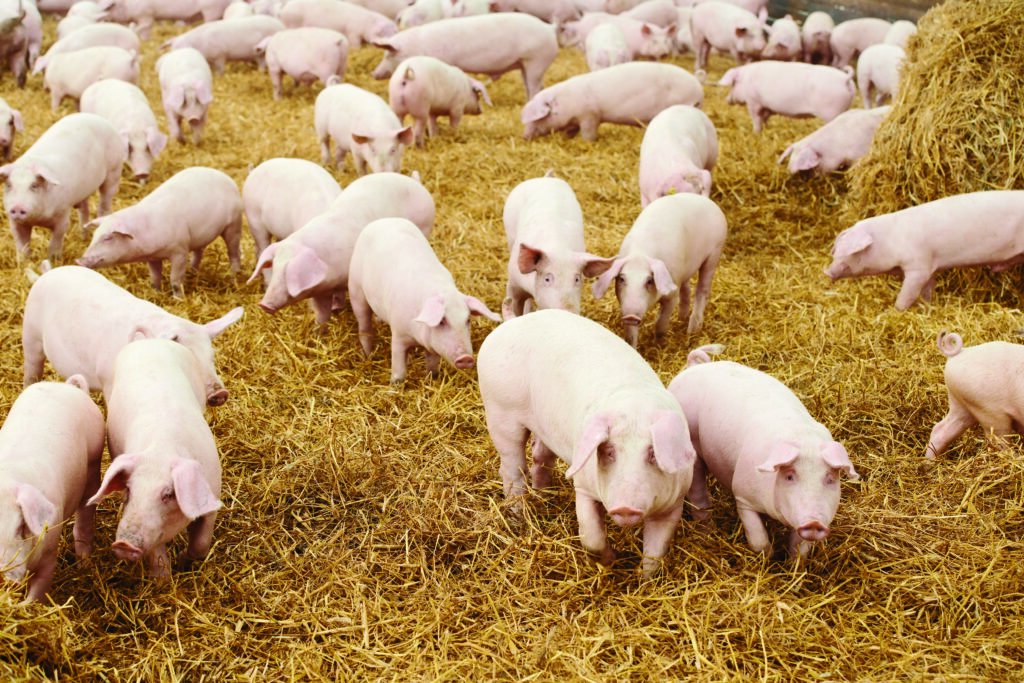Following the volatility of recent years, 2017 has seen prime pig prices return to a more normal seasonal pattern, according to Iain Macdonald, Senior Economics Analyst with Quality Meat Scotland (QMS).
Having opened the year at 151.2p/kg dwt, the Standard Pig Price (SPP) cooled slightly through January and February, before turning in March and rising strongly through the spring, adding an average of 0.9p/kg each week.
From mid-June until the end of July, prices continued to increase, but the pace more than halved, to 0.4p/kg per week, said Macdonald. As July drew to a close, the SPP traded 9% higher than its 2017 opening level, at 164.8p/kg dwt.
“Moving into August, the SPP showed its first weekly decline for more than five months, followed by three further falls in the next four weeks, leaving the SPP trading at 163.7p/kg in the week ending September 2,” he said.
“While the year-on-year premium has narrowed significantly, as prices had continued to climb steadily through the second half of 2016, the SPP closed August up 18.5% on last year.”
Recent downwards pressure points to a well-supplied market and this, Macdonald said, is reflected in spot pig prices, a key industry barometer, which are reported to have fallen back below contract prices in recent weeks.
At times when processors are able to meet their orders from contract supply arrangements, they will have limited need to purchase additional pigs on the open market, lowering spot prices.
“One seasonal factor underpinning pigmeat supplies in recent weeks has been an upturn in slaughter numbers,” said Macdonald.
“Defra slaughter statistics for the UK indicate that weekly average prime pig slaughterings rose by 3-4% between July and August in 2015 and 2016. Data from price-reporting GB abattoirs suggests this was the case again this year, though the month-on-month increase may have been slower at 1-1.5%.”
In addition to increased availability of pigs for slaughter, carcase weights, he said, tend to rebound by 1-1.5% in August after slumping to their lowest level of the year in July.
At GB price-reporting abattoirs, 2017 has been no exception with carcase weights rising by around 1% between July and August. When added to the increase in slaughter, it indicates that weekly prime pigmeat production volumes rose by just over 2% between July and August.
As a consequence of the upturn in carcase weights, the average price paid by GB processors for a standard carcase has continued to edge higher, and, with carcase weights also running above 2016 levels, this was up by nearly 21% on a year earlier. However, it should be noted that cost of compound pig feed has been around 10% more expensive than last year.
Since around a quarter of annual UK pigmeat production is exported and imports account for approximately 55% of domestic consumption, UK pig producers and processors have to operate in an international context.
On the continent, where there are similar seasonal trends in production, farmgate prices rose strongly through the spring, peaking in June at 15-20% higher than they had begun the year, before cooling by 5% in July and steadying in August.
Meanwhile, looking across the Atlantic, US farmgate prices peaked in July at around 70% higher than at the turn of the year, but have since dipped back by a quarter following a 5% rise in weekly pig slaughter above its July low point.
“In addition to supply, the Chinese market has been a key driver behind global pig prices over the past couple of years,” said Macdonald.
“A tightening of supply in China led to a sharp increase in imports in 2016. EU countries benefitted from this and collectively grew shipments to China by 85%, helping drive a recovery in farmgate prices from their 2015 low.
“However, this surge in imports slowed in the second half of 2016 as the Chinese market came into balance. When the Chinese market then moved into oversupply in early 2017, wholesale pork prices in China fell by 20% during the first half of the year and imports fell behind 2016 levels from April.”
This accelerated to a decline of more than 50% in June and July, said Macdonald, and the latest trade data from the EU and US indicates above average year-on-year declines in exports to China, of around 60%. However, the UK saw a more modest fall of 15% in June.




